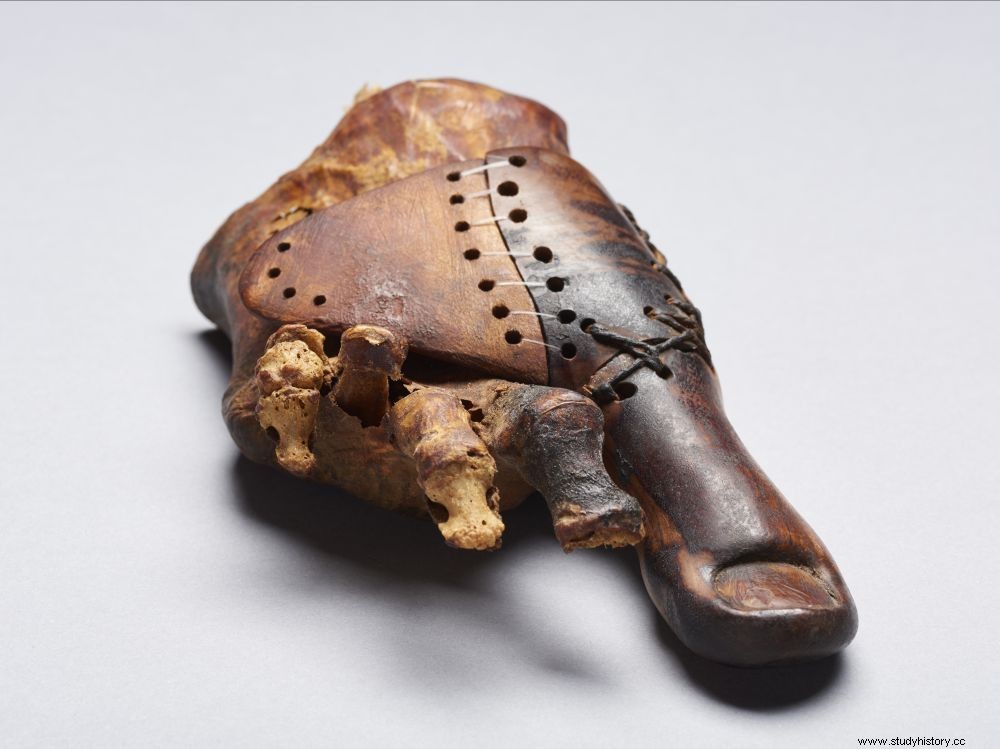It is a very rare discovery:a 3000 year old wooden toe, used as a prosthesis for the daughter of an Egyptian priest. Resembling and functional, it is one of the oldest prostheses in the world currently discovered.

The prosthesis was worn by the daughter of an Egyptian priest.
Secrets are not always taken to the grave... In 1871, when two Egyptian brothers went in search of their lost goat, they had no idea of the discovery they were about to make. As the oral tradition tells, by slipping into an opening dug in the rock, they discover the private necropolis Sheikh Abd el-Gournah, where the former mayor of Thebes is notably buried under the reign of Amenhotep II (king of - 1428 to -1400 approximately), Sennefer. It is another tomb in this necropolis that is currently attracting the attention of researchers from the University of Basel:TT95, which housed the mummy of a woman wearing a wooden prosthesis, after an amputation of the right big toe. Far from the wooden leg of pirates, it is a rare discovery whose secrets are gradually being unlocked by scientists.
One (piece of) foot in the grave
About 3000 years old, it would be, according to the researchers, one of the oldest prostheses currently discovered. Made of a wooden part and leather parts for fixing on the feet, traces of wear show that it was not only decorative but actually served its user. Very detailed and lifelike, it "testifies to the skills of a craftsman who knew the human physiognomy very well ", explains the press release. A know-how that allows the prosthesis to be particularly mobile, and the solid fixation system. A researcher from the University of Manchester had it tried in 2011 on volunteers with amputated same toe, who found it very comfortable.
Its carrier was the daughter of a priest, probably high-ranking and wealthy enough to offer a prosthesis "made in such a laborious and meticulous way ". "His owner valued a natural likeness, aesthetics and comfort "The statement reads. Using modern microscopy, X-rays and computed tomography, they were able to see that the wooden toe had been modified multiple times to fit its owner's foot." It shows how important the integrity of the human body was ", says Dr. Andrea Loprieno-Gnirs, in charge of the project, to the Daily Mail."It also shows at what level these peoples already wanted to compensate for the physical handicap, and that they had very sophisticated technologies for the manufacture of prostheses. This is very impressive work ".
